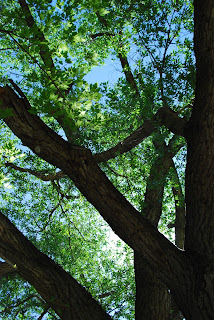Every year as the Christmas season approaches,
a debate about the propriety of the abbreviation "Xmas" begins.
In recent decades, substituting the abbreviation "X" for "Christ"
has often been criticized as cold-hearted heathenism,
a kind of secular insult to the religious basis of the holiday.
photo courtesy of morguefile.com
While capitalism and commercialism
have indeed co-opted this revered Christian holiday,
much in the same way early Christianity absorbed pagan celebrations,
the use of "Xmas" is neither secular nor recent.
And it doesn't mean that Christ has been X'd out of the celebration.
Quite the contrary, actually.
According to the Oxford English Dictionary,
the earliest reference using Xmas appears in the Anglo-Saxon Chronicle,
an historical narrative first commissioned by
English King Alfred in the late 9th century.
In 1021, an anonymous Chronicle scribe wrote:
On Xp[ ]es mæsse uhtan,
which means 'On Christmas before dawn.'
In 1380, there is this explanation in Volume I
of the Selected Works of the English Wycliffe Sermons:
X bitokeneth Crist, meaning "X" betokens or stands for Christ.
The use of "X" as an abbreviation for Christ dates back even further,
some sources say as early as 4th century Rome,
because the Greek spelling for khristos was XPI[ ]TO[ ].
"XP" and its derived forms X with a superscript t, Xt, and X
were routinely substituted for the word Christ in English texts
in each century from the 11th through the 21st century, as in these words:
Xtian 'Christian', Xtianity 'Christianity', Xtened 'christened',
and even Xpher 'Christopher'.
So next time someone employs the abbreviation "Xmas" instead of Christ,
we can all relax, knowing it's a language equivalent
like Mr. for mister or Dr. for doctor.
Linguistically, Xmas is not different in meaning from Christmas,
any more than French "noel,"
German "weihnachten" or Spanish "navidad" are.
And that's good to know.
<>

























